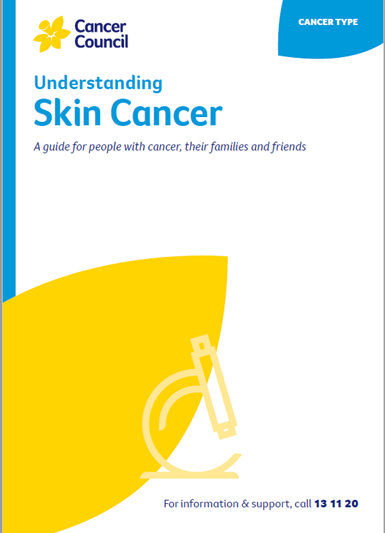- Home
- Skin cancer
- Treatment
- Curettage and electrodesiccation
Curettage and electrodesiccation
Curettage and electrodesiccation (also known as cautery) is used to treat some basal cell carcinomas (BCCs), small squamous cell carcinomas (SCCs), and areas of SCC in situ (Bowen’s disease).
How it’s done
The doctor will give you a local anaesthetic and then scoop out the cancer using a small, sharp, spoon-shaped instrument called a curette. Low-level heat will be applied to stop the bleeding and destroy any remaining cancer.
What to expect after
The wound should heal within a few weeks, leaving a small, flat, round, white scar. Some people may have cryotherapy after curettage to destroy any remaining cancer cells.
Podcast: Making Treatment Decisions
Listen to more podcasts for people affected by cancer
A/Prof Victoria Mar, Director, Victorian Melanoma Service, Alfred Hospital and Monash University, VIC; Tracey Bilson, Consumer; Raelene Buchan, Consumer; Alison Button-Sloan, Consumer; Dr Margaret Chua, Radiation Oncologist, and the Skin Radiation Oncology team, Peter MacCallum Cancer Centre, VIC; Prof Anne Cust, Deputy Director, The Daffodil Centre, The University of Sydney and Cancer Council NSW, Chair, National Skin Cancer Committee, Cancer Council, and faculty member, Melanoma Institute Australia; A/Prof Paul Fishburn, Skin Cancer Doctor, Norwest Skin Cancer Centre, NSW and Faculty of Medicine, University of Queensland; Danielle Goss, Melanoma Clinical Nurse Specialist, Amie St Clair Melanoma (part of Melanoma Institute Australia), Wagga Wagga, NSW; Louise Pellerade, 13 11 20 Consultant, Cancer Council WA: Dr Shireen Sidhu, Head of Dermatology, The Royal Adelaide Hospital, SA; Dr Amelia Smit, Research Fellow – Melanoma and Skin Cancer, The Daffodil Centre, The University of Sydney and Cancer Council NSW; Dr Tony Tonks, Plastic and Reconstructive Surgeon, Canberra Plastic Surgery, ACT.
View the Cancer Council NSW editorial policy.
View all publications or call 13 11 20 for free printed copies.
